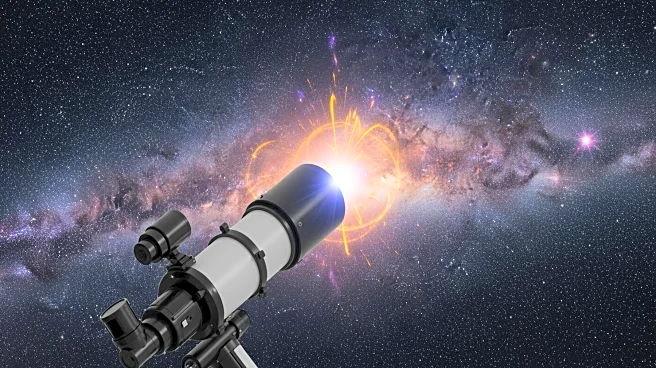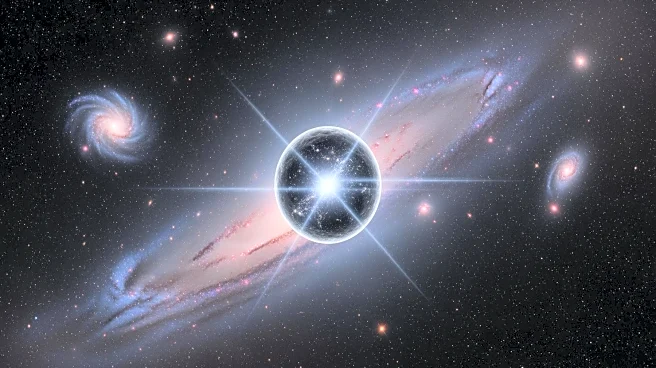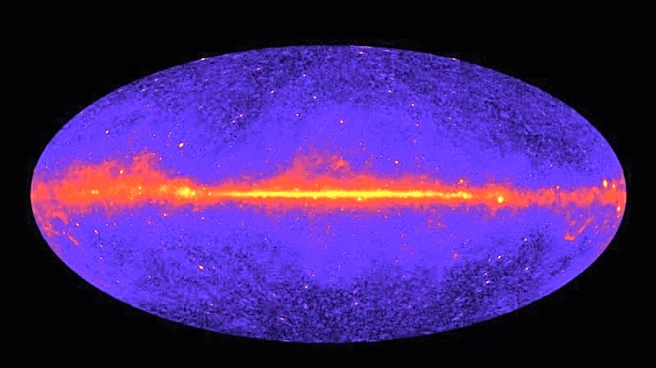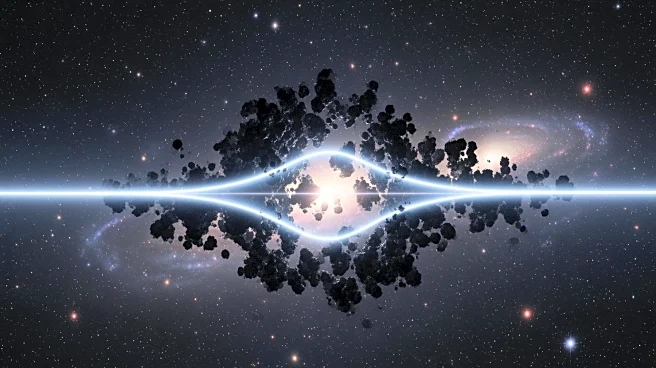What's Happening?
Scientists at Johns Hopkins University are exploring a mysterious glow of gamma rays near the Milky Way's center, which could potentially be linked to dark matter. This phenomenon has puzzled astronomers
for years, with two main theories proposed: the gamma rays could be the result of dark matter particle collisions or from rapidly spinning neutron stars known as millisecond pulsars. A recent study published in Physical Review Letters suggests that both explanations are equally plausible. The research team, led by Joseph Silk, used advanced supercomputer models to map potential dark matter locations in the Milky Way, incorporating the galaxy's early history and evolution. Their simulations closely matched real gamma-ray observations made by NASA's Fermi Gamma-ray Space Telescope, suggesting that the excess gamma rays could originate from dark matter.
Why It's Important?
The potential discovery of dark matter through gamma rays could have significant implications for astrophysics and our understanding of the universe. Dark matter is believed to dominate the universe and hold galaxies together, yet it remains undetected directly. Confirming its existence would be a monumental breakthrough, impacting theories about the universe's composition and evolution. If the gamma rays are indeed from dark matter, it would provide a new method for studying this elusive substance. Conversely, if millisecond pulsars are responsible, it would require reevaluating the number and behavior of these neutron stars. Either outcome would advance scientific knowledge and potentially lead to new technologies or methodologies in space exploration and observation.
What's Next?
The research team plans to conduct further experiments to determine the energy levels of the gamma rays, which could distinguish between dark matter and millisecond pulsars as the source. The construction of the Cherenkov Telescope Array, a high-resolution gamma-ray telescope, is expected to provide more detailed data to help resolve this mystery. Additionally, researchers will map predictions of dark matter locations in dwarf galaxies surrounding the Milky Way, comparing these to high-resolution data. The outcome of these investigations could confirm one theory over the other or present new questions for scientists to explore.
Beyond the Headlines
The search for dark matter is not just a scientific endeavor but also a philosophical one, challenging our understanding of the universe and our place within it. The implications of discovering dark matter extend beyond astrophysics, potentially influencing fields such as cosmology and particle physics. Ethical considerations may arise regarding the allocation of resources for such research, balancing the pursuit of knowledge with practical applications. The cultural impact of confirming dark matter could shift public interest and investment in space exploration, inspiring future generations to explore the cosmos.












